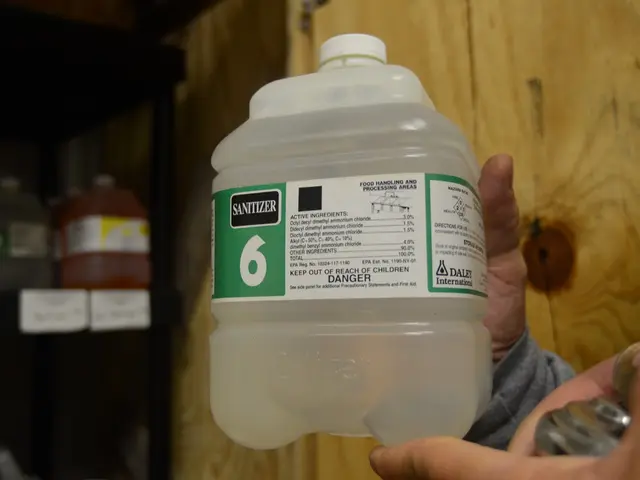Dosing Information for Tepezza: Details on form, strength, administration method, and other aspects
Tepezza, a medication containing the active ingredient teprotumumab-trbw, is a significant breakthrough in the treatment of thyroid eye disease (TED) for adults. Approved by the FDA, this biologic drug from the insulin-like growth factor-1 receptor inhibitors class is designed to reduce symptoms such as eye bulging, double vision, pain, redness, and swelling[1][3].
Administration and Treatment Course
Tepezza is administered as an intravenous (IV) infusion, usually eight times over about 21 weeks. The first two infusions last approximately 90 minutes, while subsequent infusions may be given over 60 minutes[1][3]. The typical recommended dosage range is 1 infusion of 10 mg/kg (initial dose) and 7 infusions of 20 mg/kg[2].
Common Side Effects
While Tepezza offers benefits for TED patients, it is not without risks. Common side effects include muscle spasms, nausea, diarrhea, headache, fatigue, high blood sugar, hair loss, dry skin, altered taste sensation, weight loss, nail problems, and hearing-related issues such as hearing loss, tinnitus (ringing in the ears), ear fullness, and sensitivity to sound[1][2][4]. In some cases, these hearing problems may be permanent[4][5].
Hearing Loss Concerns
Hearing problems have emerged as a significant side effect, with reports of hearing loss in approximately 10% of patients according to the manufacturer, though independent studies suggest rates as high as 65% in some groups of Tepezza users[2][5]. Symptoms may include sensorineural deafness and eustachian tube dysfunction.
Effectiveness
Tepezza is not a cure for thyroid eye disease but has been shown to reduce disease symptoms and prevent progression in many patients, particularly improving double vision and eye bulging[2][3].
Additional Details
Because Tepezza targets a specific receptor (IGF-1R), it specifically attacks the inflammatory process driving TED. Infusions require administration at a hospital or infusion center by healthcare professionals. Long-term safety data are still limited as the drug is relatively new in clinical practice[2][3].
In summary, Tepezza offers a significant therapeutic option for thyroid eye disease with evidence supporting symptom reduction but carries risks including potentially serious hearing side effects. Patients should discuss benefits, risks, and costs with their healthcare provider to make an informed treatment decision. Medical advice should always be sought from a licensed healthcare professional before taking any medication.
Tepezza is a brand-name drug used to treat thyroid eye disease (TED) in adults. Healthcare professionals monitor patients during infusion and for a short time afterward to check for side effects. If a Tepezza infusion is missed, patients should contact their doctor's office as soon as possible to reschedule. Tepezza comes in one strength of 500 milligrams (mg).
Patients should consult their doctor or pharmacist for any additional questions about Tepezza dosing. As with any treatment, it is essential to weigh the benefits against the risks and make informed decisions based on personal circumstances and medical advice.
- Tepezza, a drug for thyroid eye disease (TED) in adults, is administered intravenously and mainly consists of 8 doses over approximately 21 weeks.
- Common side effects of Tepezza include muscle spasms, nausea, diarrhea, headache, fatigue, high blood sugar, hair loss, dry skin, altered taste sensation, weight loss, nail problems, hearing-related issues, and potential permanent hearing loss.
- While Tepezza targets a specific receptor (IGF-1R) to address thyroid eye disease, it may increase the risk of chronic kidney disease due to the potential impact on the endocrine system and other medical conditions or chronic diseases.
- It's crucial for patients to discuss the benefits, risks, and costs of Tepezza with their healthcare provider and consider their overall health and wellness before starting treatment.
- Pharmacies should make available information about Tepezza, including dosage instructions and potential side effects, to promote a better understanding among patients and healthcare professionals of this therapy's impact on health and medical conditions.




